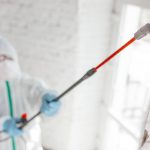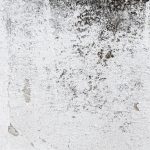
Indoor air quality is a critical factor in maintaining a healthy living environment. Poor air quality can lead to a range of health issues and contribute to the growth of mold. Understanding the connection between air quality and mold growth can help you take effective steps to prevent both. This article explores the link between poor air quality and mold growth and provides practical tips to improve your home’s air quality and prevent mold.
Understanding the Connection
Mold spores are a natural part of the environment and can be found both indoors and outdoors. However, when mold spores find a suitable environment indoors—one with moisture, warmth, and organic material—they can grow and multiply, leading to mold infestations. Poor air quality can exacerbate this problem in several ways:
1. High Humidity Levels
High humidity is one of the primary contributors to mold growth. When indoor humidity levels are consistently above 60%, it creates an ideal environment for mold spores to thrive. Poor ventilation and inadequate air circulation can trap moisture, increasing humidity levels and the likelihood of mold growth.
2. Stale Air and Poor Ventilation
Poor ventilation leads to stale air, which can accumulate moisture and provide a breeding ground for mold. Without proper air exchange, moisture from cooking, bathing, and other household activities can linger, raising humidity levels and promoting mold growth.
3. Accumulation of Dust and Organic Materials
Dust and organic materials such as skin cells, pet dander, and food particles can accumulate in poorly ventilated homes. These materials provide nutrients for mold spores, facilitating their growth. Regular cleaning and proper air filtration can help reduce these materials and prevent mold.
Health Risks Associated with Poor Air Quality and Mold
Both poor air quality and mold exposure can lead to various health issues, particularly for individuals with allergies, asthma, or weakened immune systems. Common symptoms include:
- Respiratory problems (wheezing, coughing, shortness of breath)
- Allergic reactions (sneezing, runny nose, itchy eyes)
- Headaches and dizziness
- Fatigue and difficulty concentrating
Long-term exposure to poor air quality and mold can lead to more severe health problems, making it essential to address these issues promptly.
Tips to Improve Indoor Air Quality and Prevent Mold Growth
1. Control Humidity Levels
Maintaining indoor humidity levels between 30% and 50% can significantly reduce the risk of mold growth. Use dehumidifiers in damp areas like basements and bathrooms, and monitor humidity levels with a hygrometer.
2. Ensure Proper Ventilation
Proper ventilation helps reduce indoor humidity and improve air quality. Use exhaust fans in kitchens, bathrooms, and laundry rooms to remove excess moisture. Open windows and doors when weather permits to allow fresh air to circulate.
3. Use Air Purifiers
Air purifiers with HEPA filters can help remove mold spores and other airborne particles, improving indoor air quality. Place air purifiers in high-traffic areas and rooms where you spend the most time, such as bedrooms and living rooms.
4. Regular Cleaning and Maintenance
Keep your home clean and free of dust and organic materials. Regularly vacuum carpets and upholstery with a HEPA filter vacuum, dust surfaces, and clean air ducts. Replace HVAC filters every 1-3 months to ensure they effectively capture airborne particles.
5. Fix Leaks and Address Water Damage Promptly
Water leaks and water damage can quickly lead to mold growth. Fix any leaks in roofs, walls, or plumbing as soon as they are discovered. Dry out any areas affected by water damage promptly, using fans and dehumidifiers as needed.
6. Use Mold-Resistant Products
When building or renovating, consider using mold-resistant materials. Mold-resistant drywall, paint, and insulation can provide extra protection against mold growth in areas prone to moisture.
Case Study: Improving Air Quality and Preventing Mold in Marco Island
A homeowner in Marco Island contacted QCI after noticing musty odors and experiencing allergy symptoms. Our team conducted a comprehensive air quality test and discovered high humidity levels and mold spores in the air. We installed dehumidifiers and air purifiers, improved the home’s ventilation system, and provided mold remediation services to remove existing mold. The homeowner reported a significant improvement in air quality and a reduction in allergy symptoms.
Improving indoor air quality and preventing mold growth are essential steps to ensure a healthy living environment. By controlling humidity levels, ensuring proper ventilation, using air purifiers, and maintaining a clean home, you can reduce the risk of mold and improve overall air quality.
If you suspect poor air quality or mold in your home, professional assistance can make a significant difference. At QCI, we offer expert mold testing, removal, and air quality improvement services in Southwest Florida, including Marco Island. With over 28 years of experience, our team provides thorough and effective solutions to ensure your home is safe and healthy. Contact us today at (239) 777-2875 or visit our website at QCI Online to schedule a free inspection. Let us help you breathe easier and live healthier.






